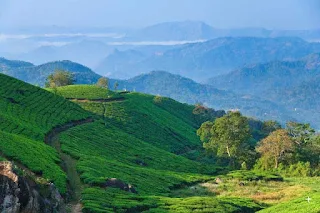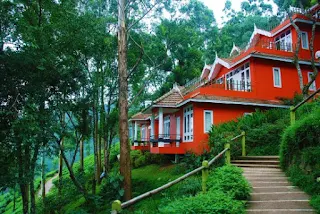The Longsheng Rice Terrace, also called the Longji Rice Terraces are located in Longsheng County, about 100 kilometers (62 mi) from Guilin, Guangxi, China.
The terraced fields are built along the slope winding from the riverside up to the mountain top, between 600 to 800 meters (2,000 to 2,600 ft) above sea level. A coiling terrace line that starts from the mountain foot up to the mountain top divides the mountain into layers of water in spring, layers of green rice shoots in summer, layers of rice in fall, and layers of frost in winter. The terraced fields were mostly built about 650 years ago.
Longji (Dragon's Backbone) Terraced Rice Fields received their name because the rice terraces resemble a dragon's scales, while the summit of the mountain range looks like the backbone of the dragon. In early June, water is pumped over the rice paddies and young plants are transferred to the main terraces.
The terraced fields are built along the slope winding from the riverside up to the mountain top, between 600 to 800 meters (2,000 to 2,600 ft) above sea level. A coiling terrace line that starts from the mountain foot up to the mountain top divides the mountain into layers of water in spring, layers of green rice shoots in summer, layers of rice in fall, and layers of frost in winter. The terraced fields were mostly built about 650 years ago.
Longji (Dragon's Backbone) Terraced Rice Fields received their name because the rice terraces resemble a dragon's scales, while the summit of the mountain range looks like the backbone of the dragon. In early June, water is pumped over the rice paddies and young plants are transferred to the main terraces.
The Dragon's Backbone Rice Terraces is a beautiful natural picture. The
linked together rice terraces vary from season to season. In spring, the
water is irrigated into the fields and the terraces look like great
chains or ribbons hung on the hillsides. When the onset of summer, green
waves rush continuously down the mountainside from the heaven. The
theme of autumn is the harvest, with the mountainside decorated with the
gold of ripened millet. Coming into winter, the whole mountain will be
covered with white snow, just like dragons playing with water.
As well as its amazing scenery, Longji is also the area to visit to
experience China’s ethnic minorities' culture. The Zhuang and the Yao
nationalities live here, though mainly it is the Zhuang people. The
women dress in unique and colorful costumes, singing and dancing. Guests
also can join in with them to enjoy the original Zhuang life and
culture, and even stay with local families enjoying both the Longji tea
and the Longji wine.
For More Details - Official Website




























































